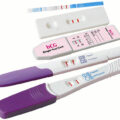Heart conditions can range from minor issues that are easily managed to severe disorders that require immediate attention. Diagnosing these conditions is crucial for effective treatment.
Medical professionals rely on various tests to diagnose heart conditions, each providing unique insights into the heart’s health. Continue reading to explore the most common medical tests used for this purpose, aiming to demystify the process for the general public.
Electrocardiogram (ECG or EKG)
An Electrocardiogram, called an ECG or EKG, is one of the simplest and fastest tests to evaluate the heart. An ECG can provide information about heart rate and rhythm and identify irregularities by measuring the heart’s electrical activity.
During the test, small electrode patches are attached to the skin of your chest, arms, and legs. As the heart beats, the electrical impulses that trigger each beat are recorded and displayed on a monitor or printed on paper.
An ECG can give doctors a good view of how healthy a heart is by showing the electrical activity it gives off. Based on those readings, doctors can give Cardiovascular Health Insights to their patients and how to take care of their heart moving forward.
The interpretation of an ECG requires expertise, as the patterns seen on the paper or monitor can indicate various heart conditions. For instance, a specific kind of ECG pattern known as a ‘ST elevation’ can strongly indicate an ongoing heart attack.
However, an ECG isn’t foolproof; some heart conditions may not always show up on an ECG, especially if the patient isn’t experiencing symptoms during the test. This necessitates the use of additional tests to diagnose heart conditions accurately.
Echocardiogram
An echocardiogram is an ultrasound of the heart that provides detailed images of the heart’s structure and function. This test allows doctors to see whether the heart is beating and pumping blood normally, which can help identify abnormalities in the heart’s size, structure, and motion.
During an echocardiogram, a technician applies a gel on your chest and uses a transducer, which emits sound waves that bounce off your heart and create images on a monitor. The echocardiogram is particularly valuable for diagnosing issues with heart valves, such as stenosis (narrowing of the heart valve) or regurgitation (leakage of the heart valve).
It can also assess the heart’s pumping strength, detect congenital heart defects, and evaluate the effectiveness of previous heart treatments. The echocardiogram is non-invasive and doesn’t expose the patient to radiation, making it a safe choice for regular monitoring and diagnosis.
Stress Tests
Stress tests, also known as exercise tests or treadmill tests, assess how your heart functions during physical activity. Exercise or doing physical activity makes your heart pump harder and faster. Thus, this test can reveal problems with blood flow within your heart that might not be noticeable otherwise.
During a stress test, you’ll be asked to walk on a treadmill or pedal a stationary bike while your heart rhythm, blood pressure, and breathing are monitored. If you’re unable to exercise, a medication can be administered to mimic the effects of exercise on your heart.
This test is beneficial for diagnosing coronary artery disease, a condition where the arteries that supply blood to your heart muscle become narrowed. It can also help determine safe levels of exercise for patients with existing heart conditions. The results of a stress test can guide the treatment plan, including medication, lifestyle changes, or more invasive procedures like angioplasty or bypass surgery.
Cardiac Catheterization and Coronary Angiography
Cardiac catheterization, a detailed and invasive procedure, involves inserting a slim, flexible tube known as a catheter into a blood vessel, typically through the groin or arm, which is then navigated to the heart. This test offers in-depth insights into how the heart operates.
This allows doctors to measure pressures within the heart chambers and examine the arteries supplying the heart. Coronary angiography, often performed during cardiac catheterization, involves injecting a special dye into the coronary arteries. This dye, visible on X-ray images, helps identify blockages in the arteries.
Cardiac catheterization and coronary angiography are critical for diagnosing and assessing the severity of coronary artery disease and planning for interventions such as stenting or bypass surgery. While these procedures are more invasive and carry some risks, such as bleeding, infection, or, in rare cases, a heart attack, they provide essential, lifesaving information for patients with severe heart conditions.
Holter Monitoring
Holter monitoring is an extended form of an ECG that records the electrical activity of your heart for 24 hours or longer. Unlike a standard ECG, which captures a momentary snapshot, a Holter monitor continuously records heartbeats over an extended period, providing a detailed picture of heart activity as you go about your daily activities.
Patients wear a small, portable device connected to electrodes on their chest, making it possible to detect irregularities that might not appear during a brief exam. This test is beneficial for diagnosing intermittent arrhythmias or monitoring the efficacy of treatments for heart rhythm disorders.
It can also help identify if there’s a link between symptoms like dizziness, palpitations, blackouts, and heart rhythm problems. The data collected can reveal patterns or conditions that might require further treatment, such as medication adjustments or implementing a pacemaker.
Holter monitoring is non-invasive and allows patients to maintain most of their normal activities, making it an invaluable tool in the diagnostic process.
Final Thoughts
Diagnosing heart conditions is fundamental for effective treatment and management. These tests play a vital role in diagnosing and treating patients. Understanding these tests helps people know how heart conditions are diagnosed and what to expect during a heart evaluation for themselves or a loved one.
With advancements in medical technology, these tests are getting better, providing hope and better results for those with heart conditions.





